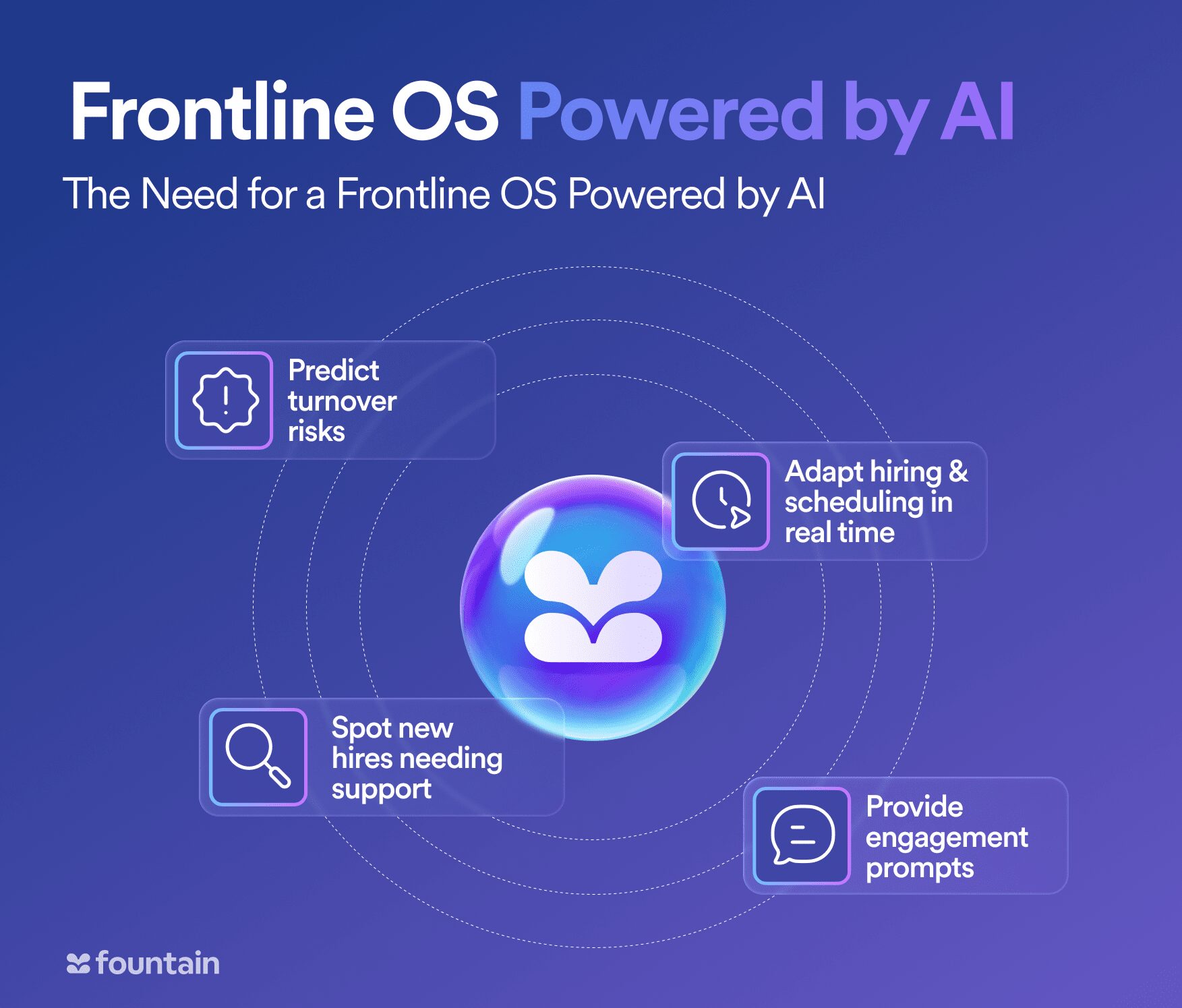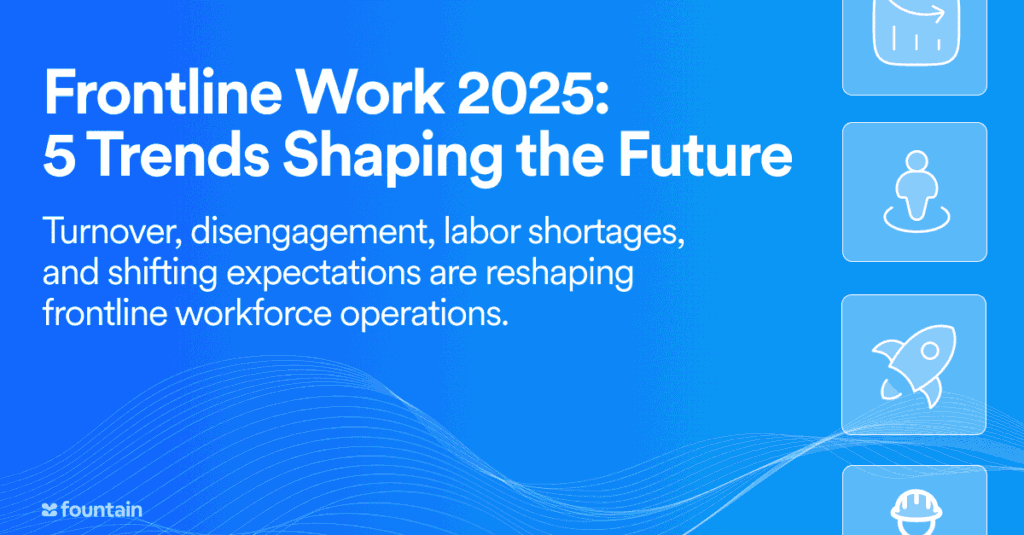
The frontline workforce faces unprecedented challenges in 2025. High turnover, ongoing labor shortages, growing expectations from Gen Z employees, and competition from gig-style work are reshaping how organizations hire, engage, and retain their teams.
These pressures are most intense in industries like retail, logistics, quick-service restaurants, and healthcare, where high-volume hiring is critical to operations. Without a strategic shift, frontline workforce operations risk falling behind in today’s highly competitive labor market.
1. Turnover Is Still Shockingly High
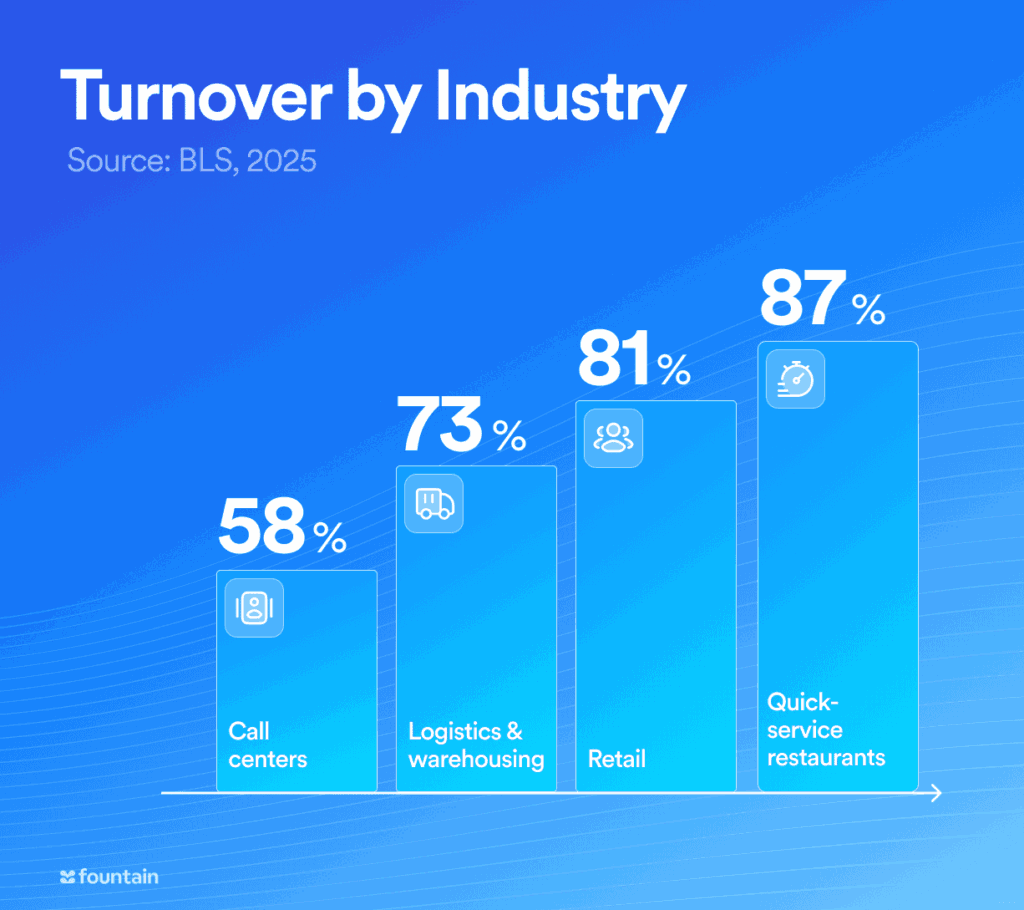
Annual turnover remains high across frontline sectors: 87% in quick-service restaurants, 81% in retail, 73% in logistics and warehousing, and 58% in call centers.
Furthermore, frontline roles remain unstable worldwide, with 41% of frontline employees and 38% of frontline managers changing jobs in the past year. Manufacturing is not immune, with 36% of firms reporting frontline attrition above 10% in the past six months.
Even more concerning, “quiet” turnover presents an even greater concern. In fact, 51% of U.S. workers are actively looking for or considering a new job, the highest level since 2015.
2. Disengagement Is Now a Global Workforce Crisis
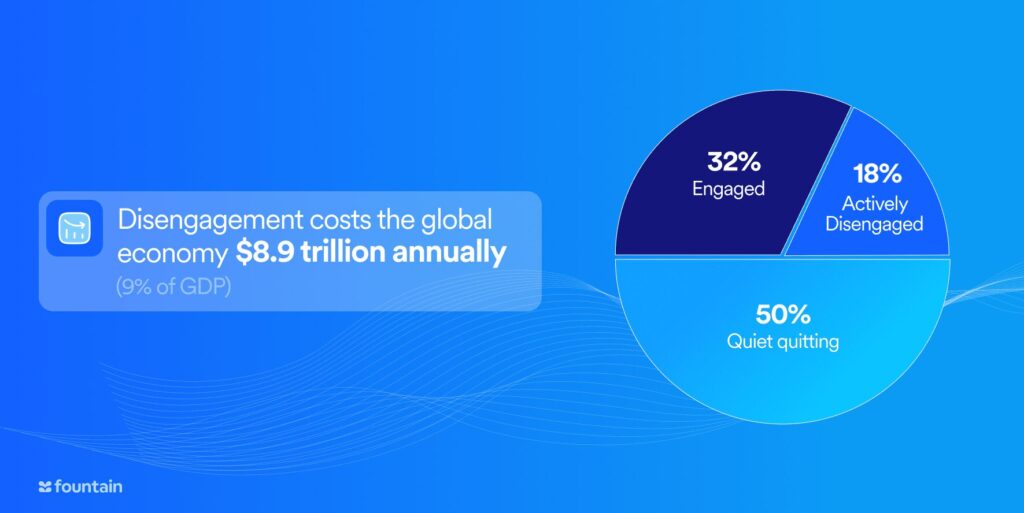
Only 32% of workers are engaged, 18% are actively disengaged, and half fall into the “quiet quitting” category. Moreover, an estimated 59% of employees are quietly quitting, doing only the bare minimum.
This disengagement costs the global economy up to $8.9 trillion in lost productivity, which is about 9% of GDP.
Among frontline staff, the situation is particularly troubling: 55% considered quitting last year, and 41% cited lack of career advancement as the main reason.
3. Labor Shortages and Persistent Hiring Pressures
As of June 2025, there were 7.4 million job openings (4.4%) and 3.1 million quits (2%), showing little change over previous months. Consequently, this highlights the continued pressure on frontline hiring.
4. Gen Z Expectations Are Redefining the Workplace
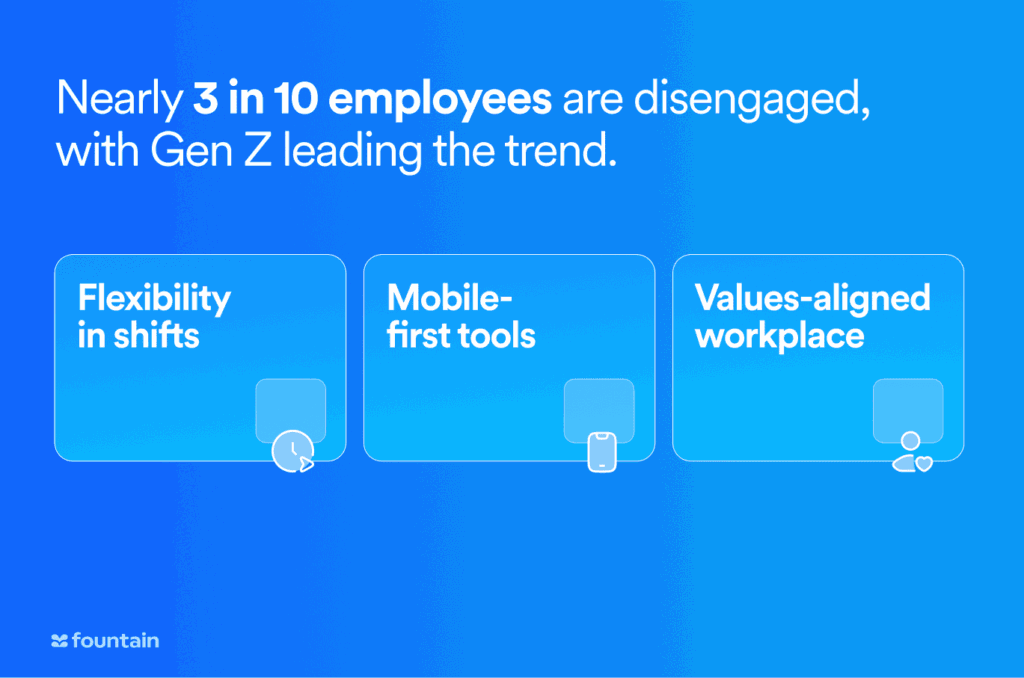
Gen Z workers expect flexibility, mobile-first tools, and workplaces that align with their personal values. As a result, these expectations are worsening existing retention challenges. This generation is also driving much of the “Great Detachment” trend, with nearly three in ten employees disengaged.
5. Incremental Fixes Are No Longer Enough
Employers using loyalty programs reduced turnover by 62% compared to those without such programs. Nevertheless, nearly 66% of HR leaders still rank retention as their top workforce challenge in 2025.
Why Change Must Be Bold and Integrated
The data makes one thing clear: small adjustments, such as minor pay raises or schedule changes, may slow problems but will not solve them.
Many managers still lack a clear view of what is driving turnover, where new hires are struggling, or how engaged their teams are. Without the integrated tools to help them identify and address problems early, they must operate reactively: a cycle that drains both resources and morale.
The Need for a Frontline OS Powered by AI
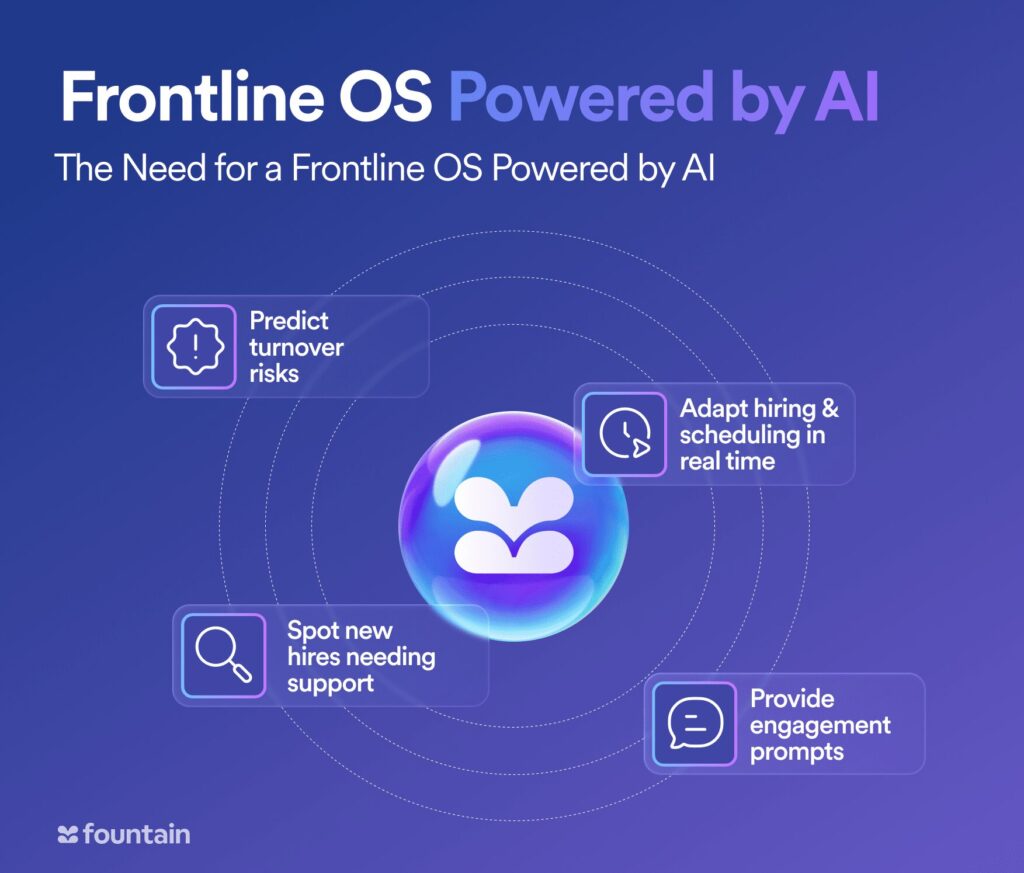
A modern solution should bring scheduling, hiring, engagement, analytics, and mobile-first tools together in a single platform. With AI-driven insights, leaders can:
- Predict turnover risks before they escalate
- Spot new hires who need extra support or training
- Provide real-time engagement prompts and recognition
- Adapt hiring and scheduling based on live business data
Conclusion: Now is the Time to Act
The challenges facing the frontline workforce are too large for small fixes. High turnover, low engagement, and persistent hiring pressures require a different approach.
Leaders need a centralized, AI-powered Frontline OS that brings all workforce processes together and delivers real-time insights. This will help organizations retain more employees, boost engagement, and create a stronger, more resilient workforce for the future.

